The Hanson Research Group seeks to understand the interaction between light and molecules and then applies that knowledge in various applications. The nature of this research requires that we work in the domain between the areas of synthesis, characterization and application. We start by synthesizing new complexes, then characterize these complexes using photophysical and electrochemical techniques, and finally test the complexes in applications like solar energy conversion or as sensors/probes.
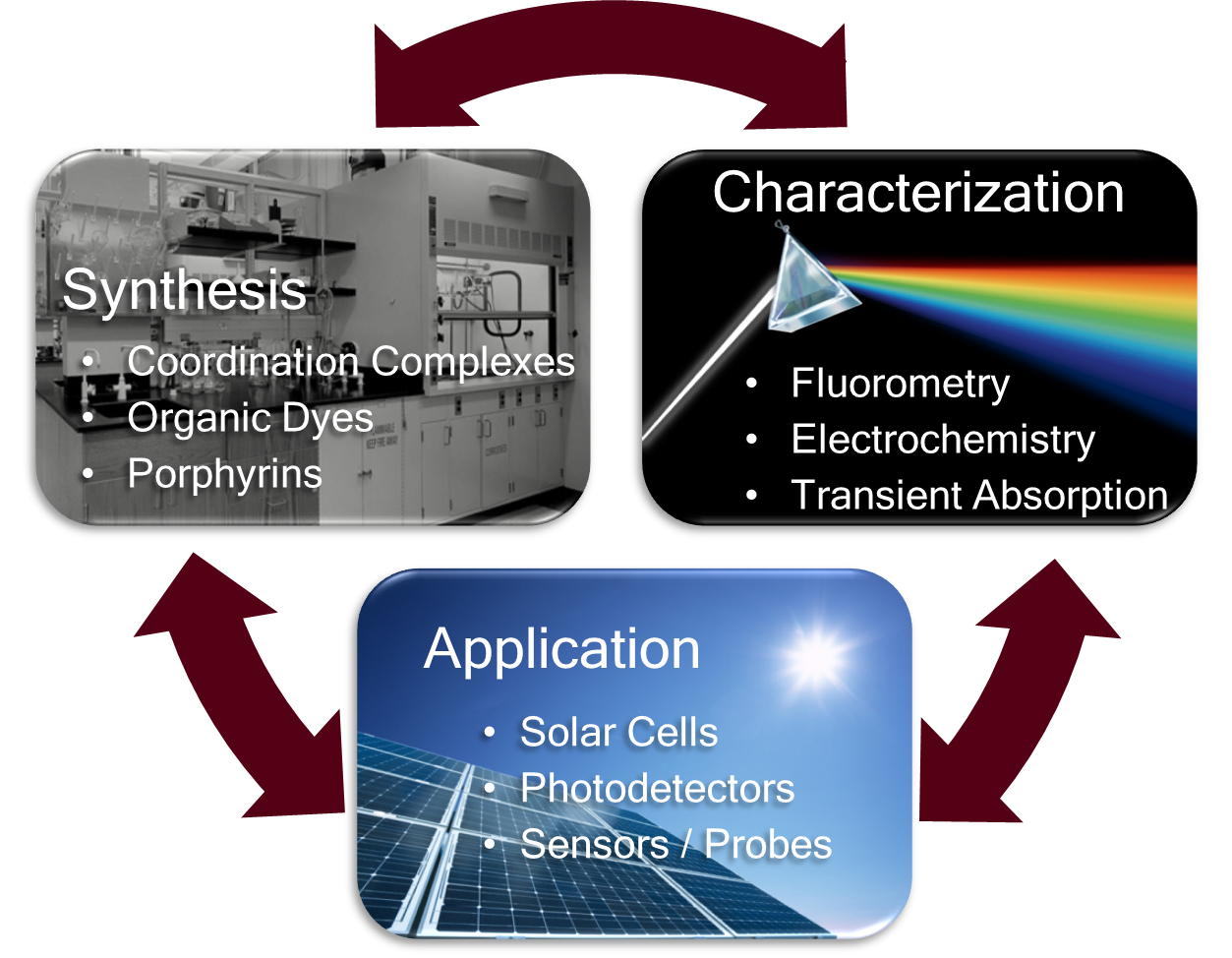
Synthesis
The Hanson Research Group designs/makes new molecules and derivatives for specific applications based on what we’ve learned from preliminary experiments and published results. Synthetic targets include organic compounds, coordination complexes of cobalt, ruthenium, platinum and other metals, as well as derivatives of natural light absorbers like porphyrins.
Characterization
It is difficult to predict all of the properties of an unknown molecule prior to synthesizing it. That is why, once a target is made, we thoroughly investigate its photophysical and electrochemical properties by using techniques like absorption spectroscopy, fluorometery, transient absorption, cyclic voltammetry and others. These results guide device design as well as help us target new candidate molecules. One of our focuses when characterizing molecules is to explore new and interesting photophysical phenomena that are both fundamentally interesting and could result in yet-unknown applications.
Application
After a molecule is made and characterized we use well-established energy and electron transfer theory to evaluate if a molecule may be suitable for a particular application. For example, if a light absorbing molecule (a chromophore or dye) has sufficient oxidation potential to oxidize I-/I3-, and the appropriate excited state potential to transfer electrons to TiO2, it may be good candidate for dye-sensitized solar cells. While known theories are relatively good predictors of molecular behavior, there is still much to be learned about molecule-material interactions. Application research is particularly challenging since it typically involves numerous variables and possible “failure” points. The key to this research is gaining a fundamental understanding of the interaction between molecules and materials through systematic research.
Summary
It is only through the interaction of these three domains of research—synthesis, characterization, and application—that we’ll expand our understanding of the interaction between light and molecules and will be able to apply that knowledge to solve meaningful problems. Students in the Hanson Research Group will constantly be exposed to all three aspects of research but will tend to specialize in one particular area.
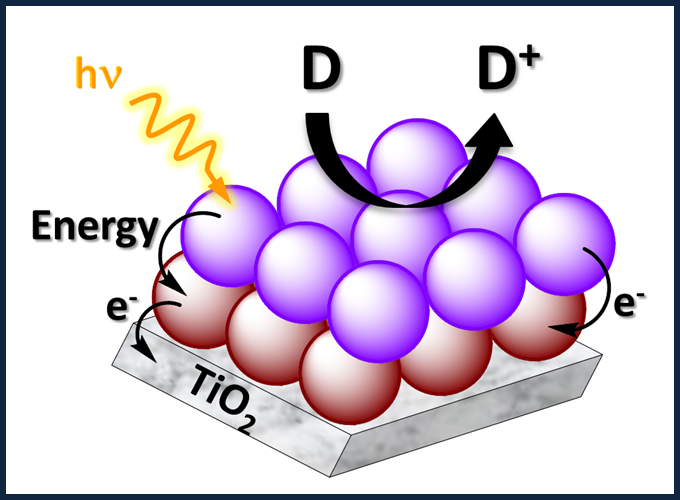
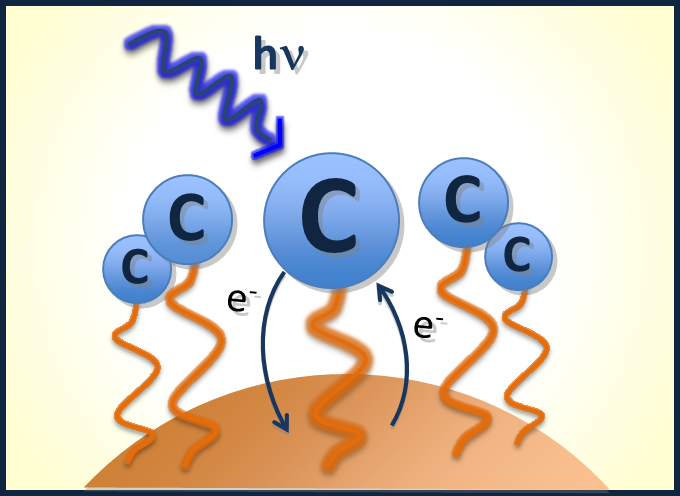
The rate of electron transfer from a dye to the semiconducting surface, and vice versa, are key events in dye-sensitized device operation. Being able to understand and control these events is crucial to increasing device performance. For example, theoretical calculations show that an order of magnitude decrease in the rate of back electron transfer from the metal-oxide to the dye/electrolyte can increase the open circuit voltage by up to 50 mV. The Hanson Research Group is interested in controlling the distance between the dye and the surface by modifying the surface binding motif. In addition to distance dependence, the chemical nature of the dye-to-surface bridge also has a large impact on the electron transfer rates.
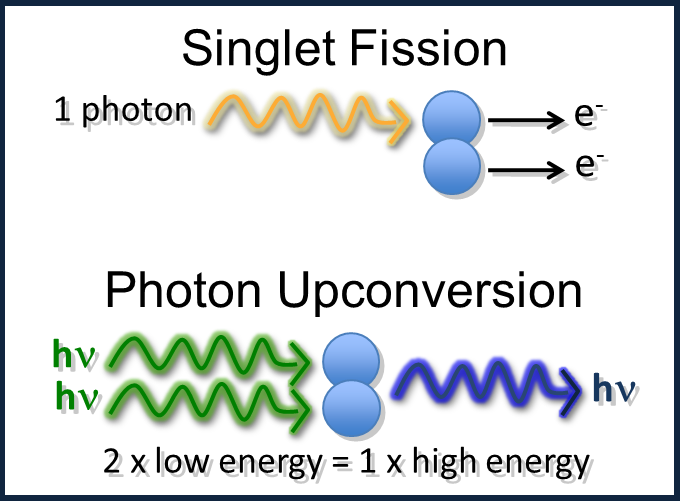
Understanding the photophysical behavior of molecules is important for a plethora of applications ranging from photodynamic therapy to solar cell technology. One aspect of our research is to synthesize and explore the properties of new light absorbing and emitting molecules. These molecules will be designed based on known structures as well as be guided by theoretical calculations. Some areas of interest include low energy light absorbers, proton transfer dyes and unique ligands for coordination complexes. We are particularly interested in exploring systems that require the interaction between multiple molecules like singlet fission and photon upconversion.
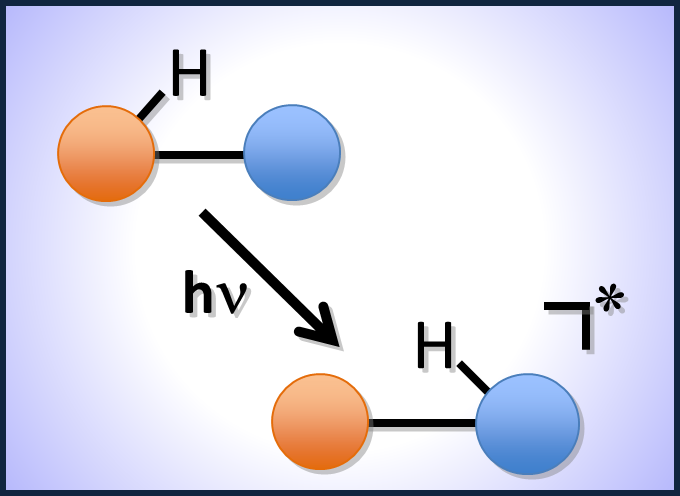
When a dye absorbs light it undergoes an electron density shift that, given the right structure, can result in an excited-state proton transfer event. Excited-state proton transfer dyes are not only fundamentally interesting but also have a number of potential applications. We explore the photophysical properties of these systems and use that knowledge to develop new dyes for metal ion sensing and light-assisted catalysis.






